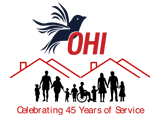How to Make Your Bathroom Accessible for People with Disabilities

By Paul Denikin
DadKnowsDIY.com
(It is estimated that one in six children between the ages of 3 and 17 have a developmental disability. My daughter Maggie is one of them. When she was born, my wife and I quickly learned that we had to make some minor – and major – changes to make our house a happy place for her to grow up. Instead of paying a contractor to handle all the repairs, I decided to learn how to tackle some of them myself. It was important to us that any improvements were functional for everyone in the family, so I did a lot of research on universal design and accessibility modifications and got to work. With several projects successfully under my belt, I started DadKnowsDIY.com. It’s a side project that allows me to share my knowledge with home improvement novices, but it’s also a means to connect with other people seeking to modify their homes for a loved one with a disability.)
One of the places in your home that poses the most risk to personal safety is the bathroom. From slipping and falling in the shower, to falling while getting up or down from the toilet, to slipping on a wet floor, anyone can get injured in the bathroom; however, the risk is much higher for people with disabilities.
That’s why making your bathroom more accessible is one of the first things you should do when considering the various home repairs and modifications to make to accommodate people with disabilities. We share some bathroom accommodations that are most critical to improving safety here, to help you plan ways to make your home more accessible for people with disabilities.
Install grab bars
Grab bars are easy to install and should be placed in key locations in the bathroom to give a person with disabilities more support. There are various types of grab bars available at home improvement stores, but you should opt for those that screw into the wall rather than adhere to the wall because they are sturdier and provide more support for users. It is also important to opt for grab bars that are rated to support the weight of the person who will be using them.
At the very least, you should install grab bars by the toilet and the shower or bathtub and within the shower or bathtub itself. When choosing a grab bar for inside the shower stall, look for one that is textured so that it is easier to grasp when wet. If you have a bathtub in your bathroom, install a clamp-on bathtub safety bar on the side of the tub. People with disabilities often have difficulty stepping into and out of the tub, and this grab bar gives them added support when they attempt to do so.
Increase toilet accessibility
The Americans with Disabilities Act (ADA) recommends that toilets be between 17 inches and 19 inches high. Higher toilet seats make it much easier for a person with disabilities to lower themselves onto the toilet, stand up after using the toilet, and get onto the toilet from a wheelchair. Raised toilet seats are an option for adding height to a toilet if you cannot afford to replace the entire toilet.
Move toilet paper to a more accessible height. If your wall-mounted toilet paper holder is located in a position that requires the person to twist in order to reach it, get a toilet paper holder that stands on the floor so it is easier to reach. You also should place commonly used items such as extra toilet paper, sanitary products, and medical equipment near the toilet in a location that is easily accessed.
As we mentioned above, installing grab bars near the toilet is important for making it more accessible. Ideally, you will install two grab bars 36 inches apart, with one on either side of the toilet.
Remodel your shower
While it can be costly to remodel a shower, doing so is well worth the added safety for a person with disabilities. Shower stalls that do not have a curve are ideal, as people can step or wheel directly into them. These shower stalls should be no smaller than five feet wide by three feet deep. Depending on the person’s preference for comfort, you should purchase a net shower chair with wheels or install a built-in shower seat so that he does not need to stand and risk a fall in the shower.
Even with a shower seat, a person can slip in the shower, so do not forget to install grab bars in the shower itself. Some people opt for colored grab bars, rather than chrome bars, to match their bathroom décor and reduce the look and feel of an institution.
Hand-held showers are a good idea for people with disabilities as well; the person can manipulate the water and wash more easily with a hand-held shower. If more than one person will use the shower, install a slider bar for the hose that allows for the height of the shower head to be adjusted. It is a good idea to install the bar beginning at four feet off the floor so it can slide to six feet high to accommodate more family members.
The bathroom does not have to be a dangerous place for your loved ones. By installing grab bars, altering the height of the toilet, and remodeling the shower, you will increase safety and make the bathroom more accessible for everyone.
Image via Flickr by gardener41
